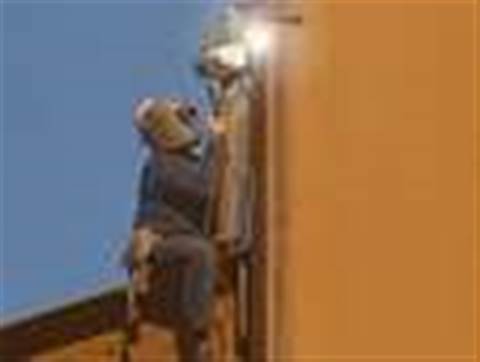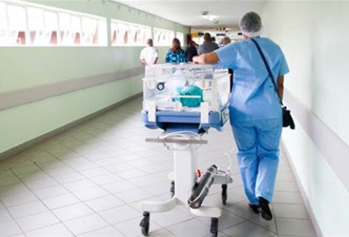The privately-owned industrial and commercial developer engaged Thomas Duryea Consulting to perform an analysis of the suitability of its environment for virtualisation using VMware technology.
The analysis involved monitoring PacLib’s servers for a month, according to IT manager David Furey.
“They came back with a proposal of about $25,000 in installation costs and another $25,000 in software costs,” Furey told iTnews.
“You’ve got to question whether it’s worth paying $50,000 for that. I know the VMware camp go on about features like VMotion, but for $50,000 I could pay someone to move my virtual machines for me.”
Furey decided instead to look at Microsoft’s Hyper-V, then in beta.
“To us, it looked like we weren’t losing any performance or benefits of virtualisation but we were saving a lot of money,” Furey explained.
“It just didn’t make financial sense to spend all that money [on vmware], when if we want to add more Hyper-Vs, it’s $49 per server.”
Furey was also comfortable with Microsoft’s roadmap to go from offering the ability to do live -- rather than only safe-state -- migration.
Live migration was demonstrated by Microsoft last month and is expected to be included as part of Windows Server 2008 R2.
Rosemary Stark, Microsoft Australia’s product manager for Windows Server and Infrastructure Products, believes the cost of Hyper-V is lowering the barriers to adoption of virtualisation.
“A lot of companies have virtualisation in pockets but it’s been very much at the high-end,” Stark said.
“The lower costs of Hyper-V has allowed people who wanted to virtualise their environment to do so.”PacLib runs a centralised IT environment for the seven core companies in the Group. These run the gamut of project management, design and construction, civil engineering and earthworks.
The environment is predominately Microsoft-based –- with Windows Server 2008 and Hyper-V, SQL Server 2005 and SharePoint 2007 in the backend, an ISA 2006 firewall, and Office 2007 across mix of Vista and XP desktops.
PacLib plans to deploy the Great Plains accounting package in 2009, according to Furey.
Running Hyper-V means the company has been able to consolidate its 16 physical servers into just four Dell PowerEdge 2950 servers. It still runs 16 servers, but the remaining 12 are virtual instances.
Furey said that both Exchange and SQL Server run on separate Hyper-V servers and by themselves due to their respective workloads.
Both are running at approximately 20 percent utilisation on Hyper-V – up from the 10-15 per cent that could typically be expected from a physical Windows-based server, Furey said.
Server utilisation rate increases in other areas have been more dramatic, with between 50 and 70 percent utilisation reported depending on the workload.
Furey is also pleased with the ability to bring new servers online fast -– a process that before virtualisation took up to 10 days just to order and receive the new server, and more time to configure it.
His IT team -– just three staff, including himself –- were recently called on by the civil company in the Group to run up a new server to host an application that electronically tracks construction vehicles in the field.
When a truck is sent out to a job, the application defines an electronic fenced zone –- typically around the property line -– to ensure it stays where it has been hired.
The system alerts PacLib if the truck strays outside the zone – so appropriate action can be taken if it is stolen or used outside of contractual arrangements.
It runs off GPS data, which is fed through a clearing house and dumped into a SQL database at PacLib.
“That was a request that came up pretty quickly,” Furey said.
“Because of Hyper-V we were able to spool up a server in minutes using templates housed in [Microsoft] System Center.”
Furey said the company will soon move into a 4.5 star energy rated building in northern Sydney. The move to Hyper-V has resulted in ‘green’ benefits amounting to ‘thousands of dollar energy savings per year’, he said.
The new building will also be cabled for IPv6 and feature Aruba wireless networking technology.
PacLib performs VMware analysis but chooses Microsoft
By
Ry Crozier
on Oct 4, 2008 9:05AM

Got a news tip for our journalists? Share it with us anonymously here.
Partner Content

Tech Data: Driving partner success in a digital-first economy

Channel faces AI-fuelled risk as partners lag on data resilience, Dicker Data summit told

Shure Microsoft Certified Audio for Teams Rooms
_(11).jpg&h=142&w=230&c=1&s=1)
The Compliance Dilemma for Technology Partners: Risk, Revenue, and Reputation

Promoted Content
From Insight to Opportunity: How SMB Service Demand is Shaping the Next Growth Wave for Partners




.jpg&w=100&c=1&s=0)
_(8).jpg&w=100&c=1&s=0)







.jpg&q=95&h=298&w=480&c=1&s=1)


.jpg&q=95&h=298&w=480&c=1&s=1)


